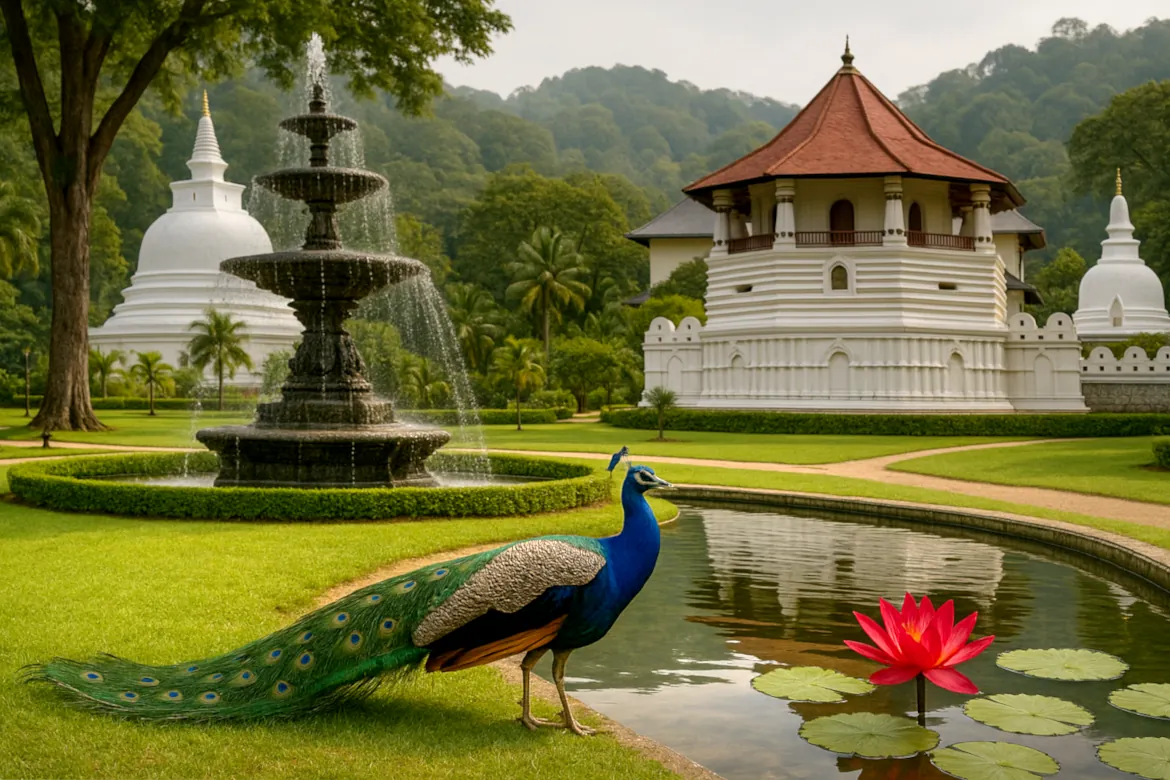Sri Lanka, known for its rich tapestry of art and culture, boasts a lesser-known but captivating tradition: nail painting, also referred to in certain regions as nail decoration art or finger-tip ornamentation.
While not as widespread or commercialized as in other countries, Sri Lankan nail painting reflects the island’s deep aesthetic sensibility and cultural symbolism, often tied to rituals, social status, and ceremonial occasions.
Table of Contents
Materials and Techniques
Historically, natural pigments were used for nail coloring and decoration:
- Lac (Laksha): A deep red resin collected from trees, used for staining nails.
- Henna (Maruthondi): Imported from India but also grown locally, used for its cooling and staining properties.
- Beeswax & Mineral powders: Sometimes combined for added gloss and durability.
Nail decorations were applied using fine brushes made from porcupine quills or slender bamboo sticks. Patterns ranged from floral motifs to geometric lines and dots.
Traditional Patterns and Their Meanings in Sri Lanka
Red Lac Lotus Bloom
A symbol of purity and enlightenment, the lotus was painted with precision—its petals radiating from the center of the nail outward. This design was popular during Perahera festivals.
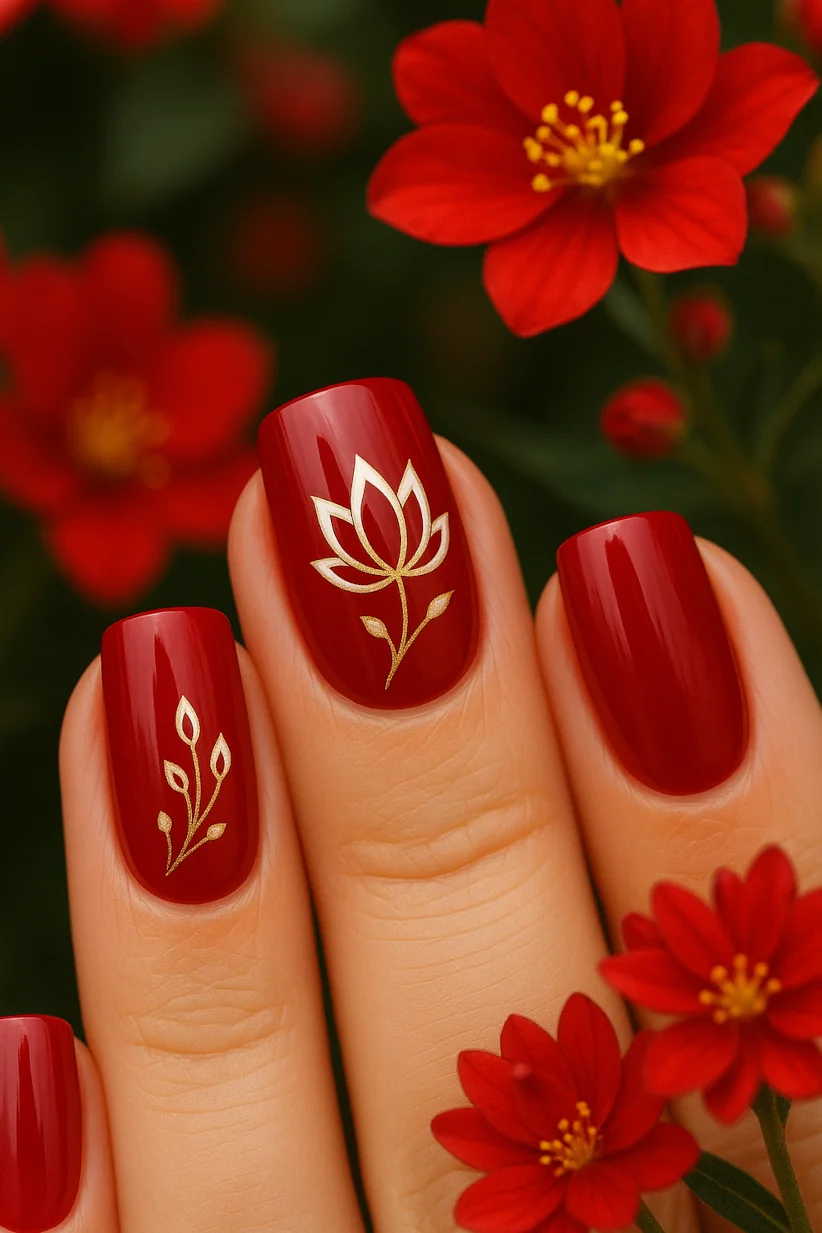
Each fingernail is painted with a deep red base using lac. On the thumbnail, a white lotus with five petals is centered, bordered with golden dots. The index finger features smaller lotus buds and a curved stem.
Kandyan Swirl Motif
Inspired by Kandyan temple art, this pattern involved spiral lines and dots along the nail edges. It was used to signify marital status in some regions.
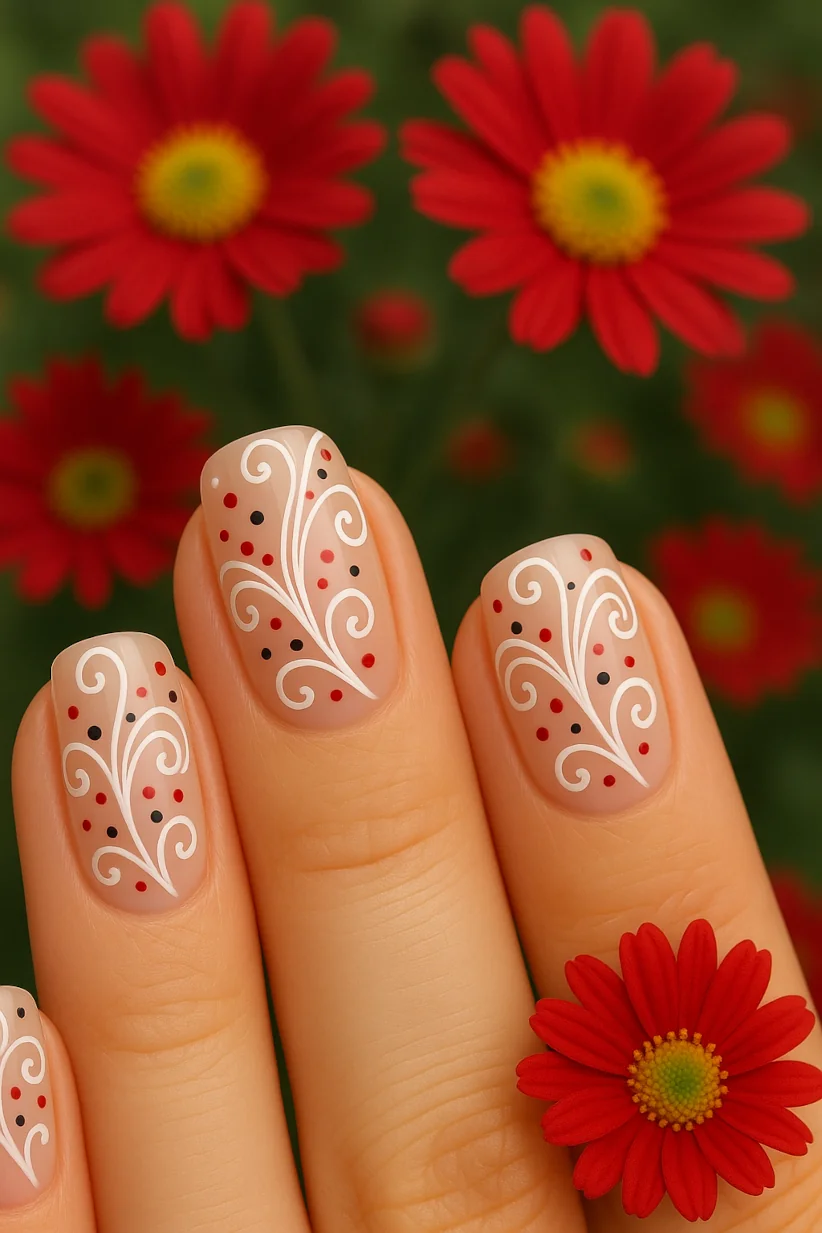
On a clear nail base, delicate white swirls loop from the cuticle to the tip. Between the swirls, tiny red and black dots imitate temple mural patterns.
Peacock Feather Streaks
Reflecting the vibrancy of Sri Lanka’s native fauna, these patterns included tiny lines and dots that mimicked the iridescent eye-spots of a peacock feather—commonly worn by dancers in traditional performances.
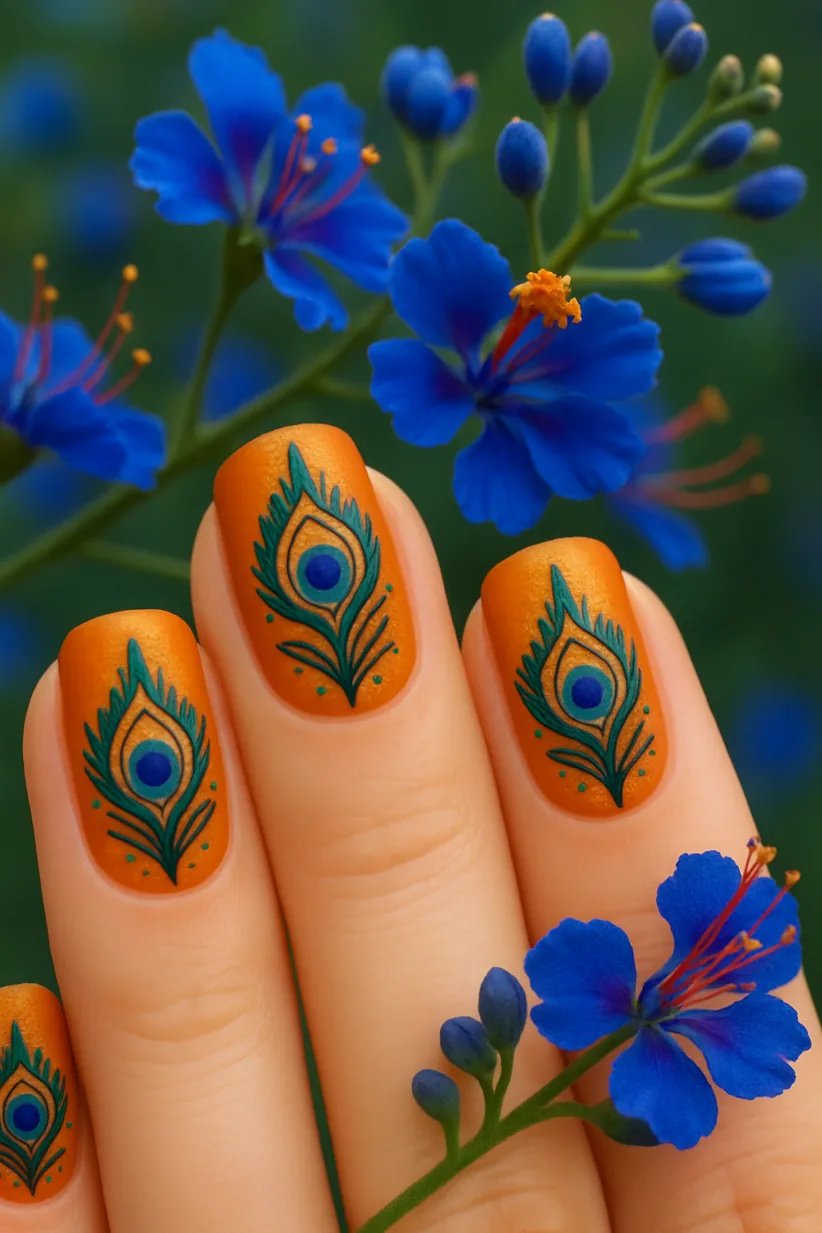
The nail bed is stained a light orange with henna. On each finger, a hand-drawn feather with a central “eye” motif is inked in dark green and indigo, with gold specks added for shimmer.
Temple Border Edge
A thin gold or red line along the edge of the nail, mimicking the ornate borders of temple murals. It was a minimalist style for more solemn ceremonies.
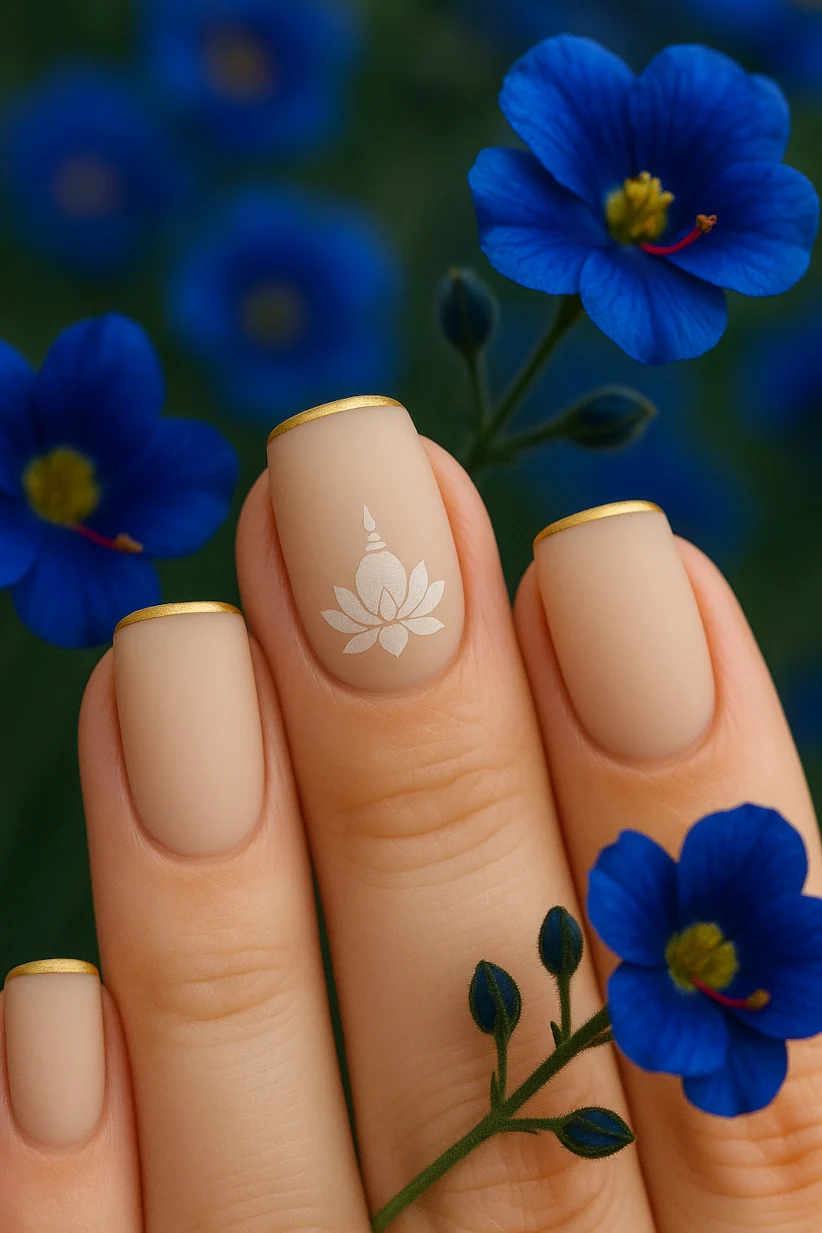
A matte nude nail base is lined at the tips with a thin gold stroke. The ring fingernail has a miniature stupa symbol at the center, surrounded by white petals.
Historical Background of Traditional Nail Paintings
Traditional nail decoration in Sri Lanka dates back centuries and was mostly practiced among women in royal or aristocratic families. It was not merely cosmetic but symbolic—used during key life events such as weddings, religious festivals, and even funerary rituals. Nails were often stained with natural dyes like lac or henna, and occasionally decorated using minute brushes and tools made from natural materials.
In ancient Sri Lankan manuscripts and temple murals, women are depicted with elaborately adorned hands and nails, indicating that the tradition was once more prevalent and celebrated.
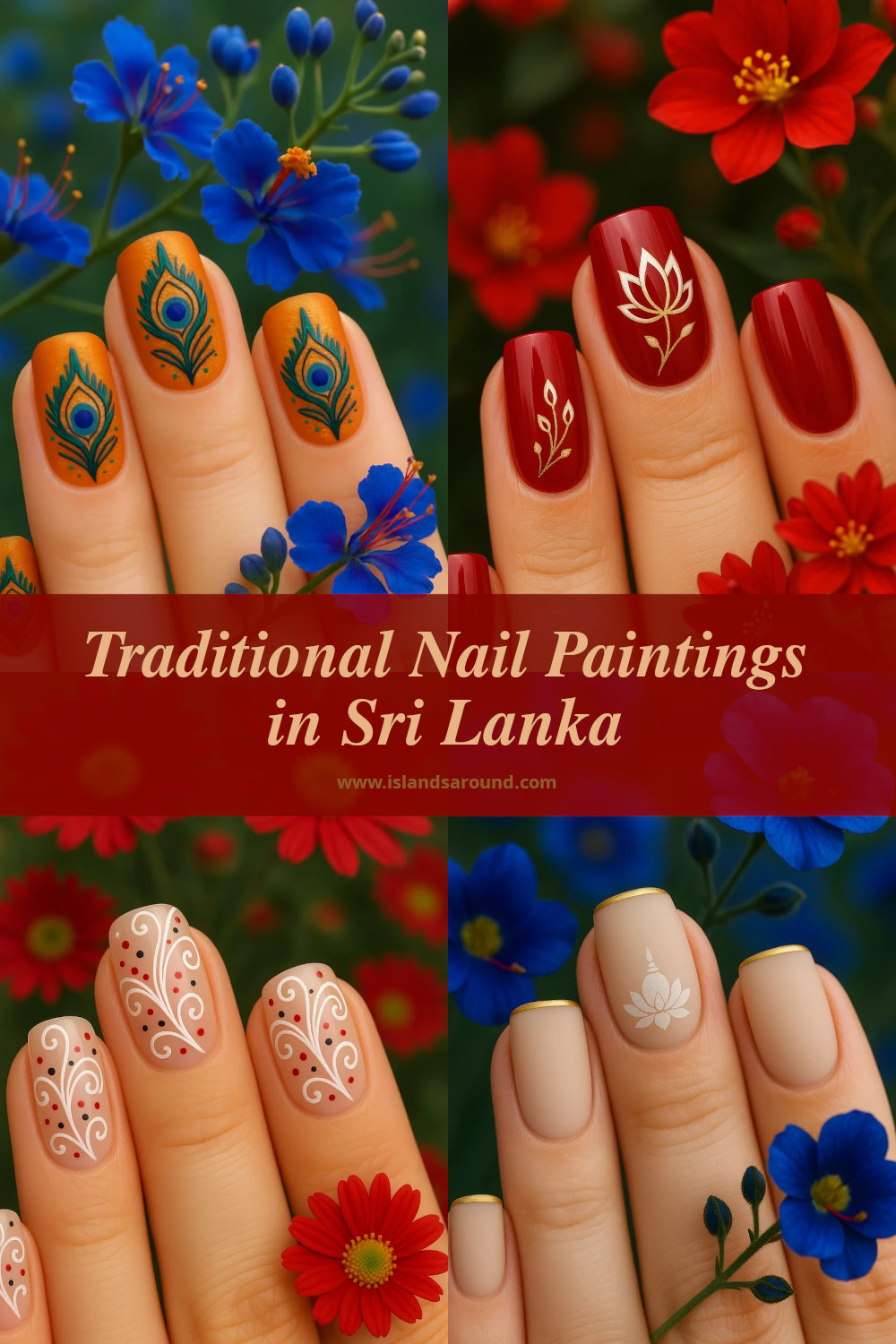
Modern Interpretations and Revival of Traditional Nail Paintings
In recent years, artists and fashion designers in Sri Lanka have begun to revive traditional nail art as a cultural expression. Contemporary salons in Colombo and Kandy now offer heritage-inspired nail art, combining modern tools with ancient motifs. Some bridal stylists incorporate lotus or peacock designs into their nail aesthetics, bridging the old and the new.

